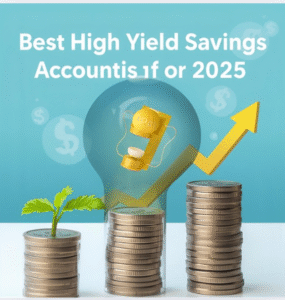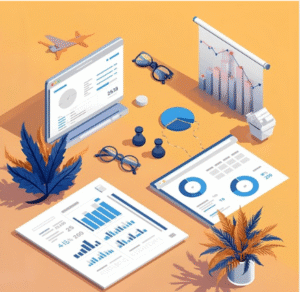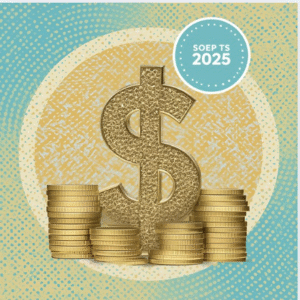Introduction to High-Yield Savings Accounts
High-yield savings accounts are a popular financial tool for those aiming to make the most of their savings without taking on significant risk. These accounts generally offer higher interest rates than traditional savings accounts, allowing you to grow your money faster while still enjoying the security of FDIC insurance. Whether you’re saving for a short-term goal or setting aside funds for future needs, these accounts provide a practical way to keep your money accessible while earning additional returns

One of the main advantages of high-yield savings accounts is their ease of use. Many banks offer online platforms and mobile apps, making it simple to deposit, transfer, and monitor your funds from virtually anywhere. This convenience has contributed to the growing popularity of these accounts among savers across the United States.
Another appealing aspect is that high-yield savings accounts typically come with fewer risks compared to other investment options. Your deposits are insured up to the applicable limits, providing peace of mind that your money is protected. Additionally, they don’t involve the market volatility that comes with other financial products, making them a stable option for individuals who prefer a more predictable way to build savings.
Interest rates on high-yield savings accounts are often tied to market conditions and can vary between banks. While the rates may fluctuate, they are still generally higher than what you would find with standard savings accounts. This makes them an attractive choice for anyone who wants to see their savings grow faster over time.
By choosing the right high-yield savings account, you can take advantage of competitive interest rates and features that align with your financial goals.
Factors to Consider When Choosing an Account
When evaluating high-yield savings accounts, understanding the terms and conditions associated with each option is essential. Start by comparing interest rates among different banks to identify accounts that offer the best potential for growing your funds. While higher rates can be enticing, it’s also important to be aware of how often these rates are adjusted. Some banks may provide promotional rates that decrease after an introductory period, so be sure to read the fine print.
Fees are another crucial aspect to consider. Certain accounts may charge maintenance fees, which can significantly reduce your overall earnings. Look for accounts that minimize or eliminate fees to ensure that more of your money stays in your savings. Additionally, check whether the bank imposes fees for exceeding withdrawal limits or failing to maintain a minimum balance, as these can impact your ability to save effectively.
Accessibility and

convenience are also key factors. Many banks now offer digital tools, such as mobile apps and online platforms, to simplify account management. Evaluate whether the bank’s services align with your preferences, including features like mobile check deposit, automatic transfers, and quick access to customer support. For individuals who value flexibility, choosing a bank with an intuitive interface and seamless digital tools can make a big difference.
Another point to examine is the deposit insurance coverage provided by the bank. Ensure that the institution is backed by the FDIC, which protects deposits up to the applicable limits. This security is particularly valuable for those looking to safeguard their savings without taking unnecessary risks. Similarly, consider how the bank handles funds above the insurance limit if you plan to deposit a significant amount.
Finally, take a closer look at any restrictions that might come with the account. Some high-yield savings accounts limit the number of transactions you can make per month, which may be inconvenient if you anticipate needing frequent access to your funds. Others may have tiered interest rates based on the balance in your account, meaning that higher balances qualify for better rates. Choose an account that aligns with your financial behavior and goals to avoid surprises down the line.
Top High-Yield Savings Accounts for 2025
When looking for the best high-yield savings accounts in 2025, several options stand out due to their competitive interest rates, minimal fees, and user-friendly features. Each bank offers distinct advantages, allowing savers to find an account that suits their specific needs.
Bank A is a reliable choice for those who prioritize simplicity and accessibility. With no minimum balance requirements, this account is ideal for individuals just beginning to build their savings. The bank’s online platform is straightforward to navigate, offering features like automatic transfers and real-time balance updates. Additionally, Bank A frequently reviews its rates to remain competitive, ensuring that account holders can make the most of their savings over time.
For savers who value technology and convenience, Bank B provides a strong offering with its advanced mobile app. This app allows customers to manage their account with ease, offering tools such as mobile check deposit, instant alerts, and easy transfers. Bank B’s high-yield savings account also boasts a strong interest rate and minimal account fees, making it a practical choice for those seeking a seamless banking experience. Furthermore, the bank offers accessible customer service, ensuring users can resolve issues quickly.

Bank C stands out for offering one of the highest interest rates available on the market. While this account does require a moderate minimum balance to open and maintain, it remains an appealing option for savers looking to maximize their returns. Bank C also offers tiered interest rates, meaning customers with higher balances can earn even more over time. This feature makes it an excellent choice for individuals with larger savings goals. The bank’s website and app provide detailed insights into account performance, helping users stay on top of their financial growth.
In addition to these three options, several smaller or regional banks and credit unions are stepping up with attractive high-yield savings accounts. These institutions often offer competitive rates and personalized customer service, which can appeal to those who prefer a more tailored banking experience. However, it’s essential to review their terms carefully, as some may have stricter requirements for maintaining the account or accessing specific features.
Lastly, online-only banks remain strong contenders in the high-yield savings market. Without the overhead costs associated with physical branches, many of these banks can afford to offer some of the most competitive interest rates available. These accounts often come with no monthly fees and include innovative digital tools to help customers stay in control of their savings. However, potential customers should ensure that these banks provide FDIC insurance to protect deposits.
By exploring options from well-established national banks, online-only institutions, and regional banks, savers in 2025 can find a high-yield savings account that aligns with their financial habits and goals. Each option offers unique features that cater to different preferences, ensuring that there’s something for everyone in the competitive high-yield savings market.
Tips for Maximizing Your Savings
High-yield savings accounts are an excellent tool for growing your money, but taking a proactive approach can help you maximize their potential even further. One effective method is to establish a clear savings goal. Whether you’re building an emergency fund, saving for a major purchase, or planning for a vacation, having a target amount in mind can keep you motivated and focused on consistent contributions.
Take advantage of automatic transfer features offered by most banks. Setting up recurring transfers from your checking account ensures you prioritize savings and reduce the temptation to spend extra funds. By automating the process, you create a disciplined habit without needing to make manual decisions each month.
It’s also beneficial to monitor interest rates periodically. While high-yield savings accounts typically offer better rates than standard accounts, rates can change based on market conditions or bank policies. Keeping an eye on your bank’s rates allows you to compare them with competitors. If you find an account with more favorable terms, consider transferring your funds to ensure your money works harder for you.
Pay close attention to any balance requirements tied to your account. Some accounts offer tiered interest rates, meaning higher balances can qualify for better rates. If your financial situation allows, aiming to reach these higher tiers can significantly boost your earnings over time. However, be cautious about spreading your funds too thin if you’re managing multiple financial priorities.
Another way to optimize your savings is by linking your high-yield account to your checking account for overdraft protection. Many banks allow this connection, which can prevent unnecessary overdraft fees. This feature not only safeguards your finances but also ensures you maintain control of your money.

When selecting an account, review the withdrawal limits carefully. Many high-yield savings accounts have restrictions on the number of transactions allowed per month. Planning your withdrawals strategically can help you avoid additional fees or penalties that might reduce your overall savings.
Additionally, leverage digital tools and alerts provided by your bank. Many financial institutions offer apps or online platforms that track your progress toward goals, notify you of rate changes, or remind you of upcoming transfer dates. These tools can simplify account management and keep you engaged with your savings strategy.
Finally, stay informed about new products and promotions. Banks occasionally introduce limited-time offers, such as bonus interest rates or sign-up incentives, to attract new customers. Taking advantage of these promotions when they align with your goals can give your savings a temporary boost. Just make sure to understand any conditions tied to such offers to avoid unexpected costs.


